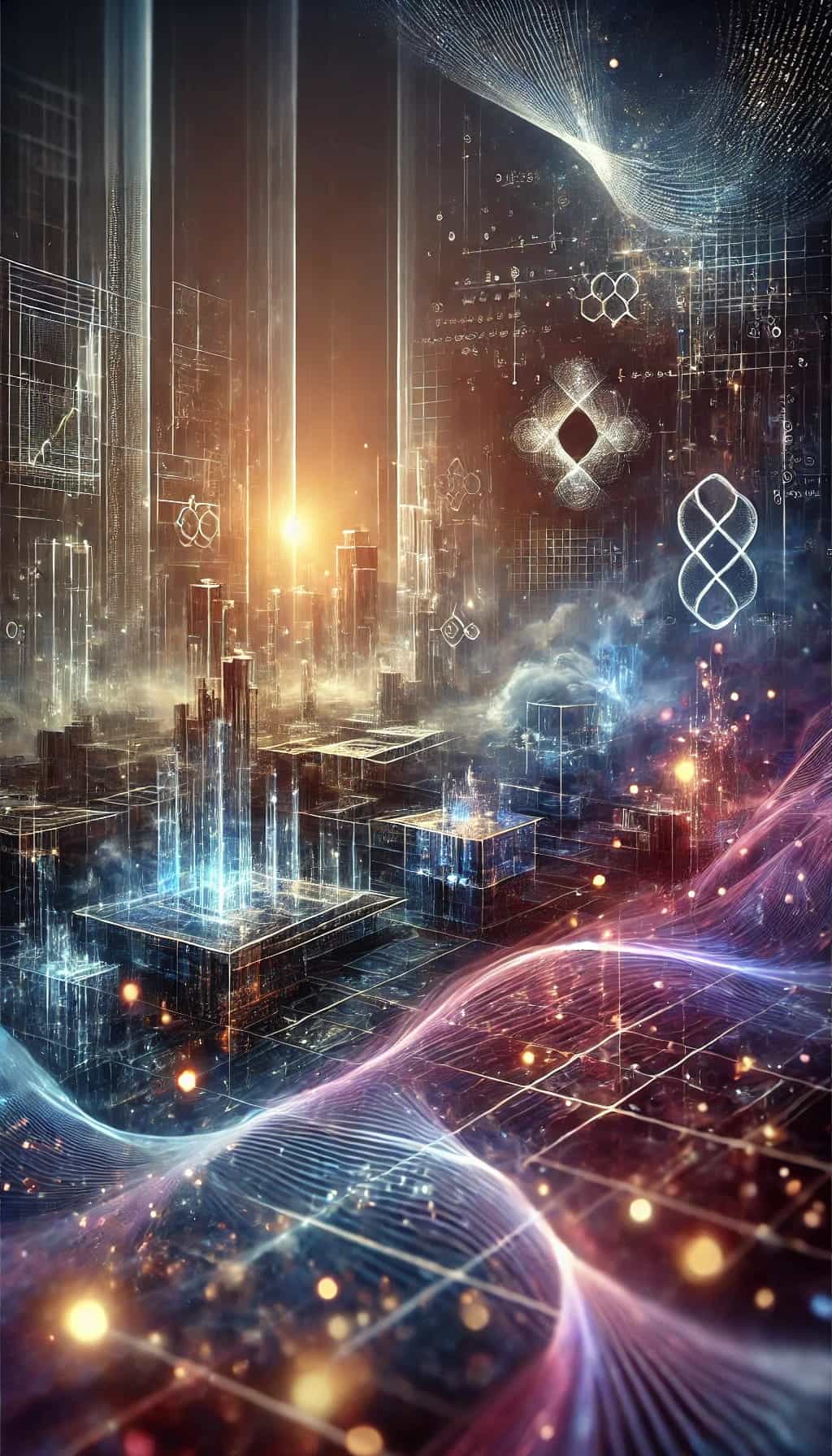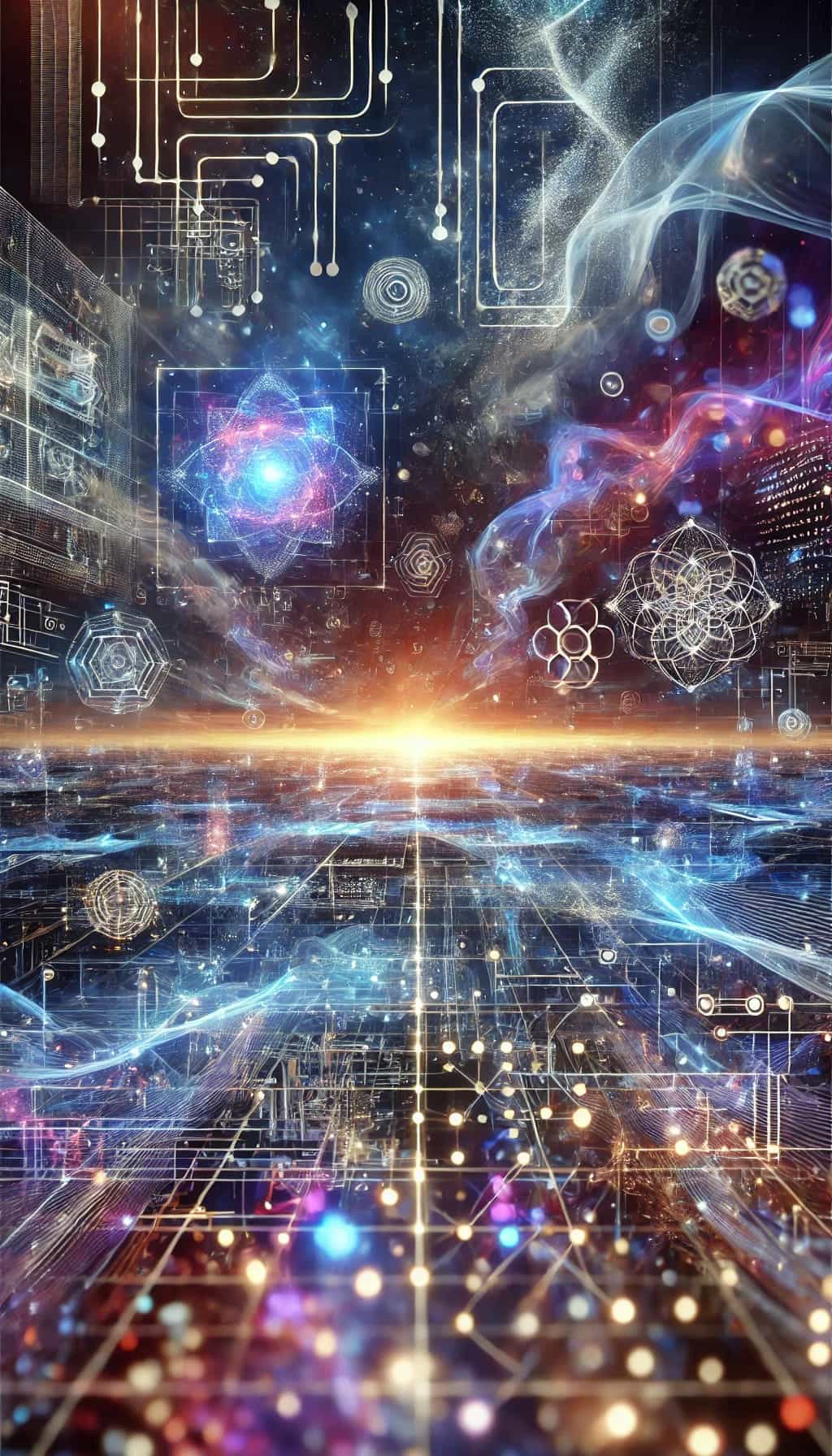The Simulation Authenticity Principle: Defining the Essential Boundaries Between Simulated and Synthetic Reality
Abstract
This paper introduces the Simulation Authenticity Principle (SAP), a fundamental framework for characterizing simulated realities through their inherent boundaries and unpredictability. We establish essential epistemic and control boundaries, demonstrating that authentic simulations must resist both perfect prediction and external control. The SAP offers a rigorous theoretical foundation for understanding and creating simulations, with significant implications for various fields.
1. Introduction
The simulation hypothesis posits that our reality might be a computer simulation. This provocative idea raises a fundamental question: what distinguishes an authentic simulation from a mere video game? This paper addresses this question by introducing the Simulation Authenticity Principle (SAP). SAP characterizes simulated realities through essential boundaries and their behavior under prediction and observation, offering a unified theory of simulation authenticity.
2. Core Definitions and Boundaries
2.1 Formal Definitions
To precisely distinguish between authentic simulations and synthetic realities, we introduce formal definitions.
- Authentic Simulation (AS): A computational reality system that maintains epistemic and
control boundaries while exhibiting emergent behavior and internal causality. Formally:
AS = {B, E, C}
- B = {Epistemic, Control} Boundaries
- E = Emergent Properties
- C = Internal Causality
- Synthetic Reality (SR): A system violating one or both essential boundaries, resulting
in predetermined or externally controlled outcomes. Formally:
SR = {B′, E′, C′}
- B′ = Violated Boundaries
- E′ = Limited or Predetermined Emergence
- C′ = External Causality (partially or fully)
2.2 Essential Boundaries
SAP defines two core boundaries that an authentic simulation must uphold: epistemic and control boundaries. These boundaries ensure the simulation's integrity and unpredictability.
2.2.1 Epistemic Boundary
The epistemic boundary prevents perfect knowledge or prediction of the system's future state, ensuring inherent uncertainty within the simulation.
Example: In a complex weather simulation, even with detailed initial conditions, the chaotic nature of atmospheric interactions prevents precise long-term predictions.
2.2.2 Control Boundaries
Control boundaries prevent external manipulation of the system, ensuring that the simulation operates independently of external influences.
- State Inaccessibility: External agents cannot modify the simulation's internal state.
- Outcome Independence: External manipulation attempts do not influence simulation outcomes.
- Interference Resistance: The simulation is robust against unintended external interference or tampering.
Analogy: A secure computer system employs firewalls and encryption to prevent unauthorized access and manipulation, analogous to control boundaries in simulations.

Universe 00110000
3. State Classification
SAP categorizes simulation states into authentic simulations and synthetic realities, each with distinct characteristics.
3.1 Simulation State
- Emergence: Presence of emergent properties and unpredictable behavior.
- Unpredictability: Outcomes cannot be reliably predicted due to inherent uncertainty and complexity.
- Non-Interference: Resilience to external manipulation and control.
- Internal Causality: Events are driven by internal factors and interactions within the simulation.
- Complex Dynamics: Exhibiting complex, chaotic, and often irreducible behavior.
- Self-Organization: Capacity for self-organization, pattern formation, and adaptation.
- Maintained Boundaries: All essential boundaries (epistemic, control) are upheld.
3.2 Synthetic Reality States
Synthetic realities violate one or both essential boundaries. They are further classified into:
3.2.1 Deterministic Synthetic Reality
- Predictability: Outcomes can be fully predicted due to deterministic rules or external control.
- Fixed Causality: Predetermined causal relationships with limited or no emergent behavior.
- No Emergence: Lack of genuine emergent properties; any apparent complexity is pre-programmed.
- Predetermined Sequences: Events follow a fixed script or predetermined trajectory.
- Complete Knowledge: The system's state and rules can be fully known.
3.2.2 Controlled Synthetic Reality
- External Manipulation: Susceptible to external control and manipulation of internal states and outcomes.
- Broken Causality: External factors significantly influence or dictate events within the system.
- Controlled Outcomes: Outcomes are predetermined or heavily influenced by external agents.
- Directed Evolution: The system's evolution is externally guided or constrained.
- Imposed Changes: Changes are forced from the outside, overriding internal dynamics.
4. Distinction from Video Games
While games might initially seem to share characteristics with simulations, the Simulation Authenticity Principle (SAP) draws clear distinctions, particularly in terms of control and emergence. Games, despite their interactive elements, are fundamentally systems controlled by external players, violating the control boundaries essential to authentic simulations. Player actions directly manipulate the game state and outcomes, precluding the kind of independent, emergent behavior observed in simulations governed by SAP. In true simulations, any evolution or change arises solely from internal causality, with external observers unable to exert control, a principle directly contradicted by the player-driven nature of games.

Universe 00110000
5. Philosophical Consequences
SAP not only provides a technical framework but also delves into significant philosophical territories, challenging our understanding of reality and our place within it.
5.1 Nature of Reality
SAP challenges our understanding of reality by positing that perceived reality could be a simulated construct. This perspective necessitates a re-examination of foundational concepts such as existence, perception, and consciousness. If SAP is a valid principle, it implies that what we perceive as reality may inherently contain unpredictability and resist external control.
5.2 Creator-Creation Relationship
The relationship between creators (simulators) and creations (simulated beings) is nuanced and multifaceted:
- Creators Must Accept a Lack of Complete Control: Simulators cannot micromanage every aspect of the simulation, emphasizing emergent behaviors.
- Observation Without Interference Becomes Key: Creators observe the simulation without altering its course, preserving authenticity.
- Focus Shifts from Outcomes to Possibilities: Emphasis moves from controlling outcomes to allowing a range of possible developments.
- Success is Measured by Emergence Rather than Control: Authenticity is achieved through the emergence of complex behaviors, not through tight control.
- Boundary Respect is Essential: Simulators must uphold the essential boundaries to maintain the simulation's integrity.
5.3 Hierarchical Implications
Simulated realities may exist within a hierarchy of simulations, each influencing and being influenced by others.
5.3.1 Unidirectional Influence
- Information and Influence Flow Upward: Lower-level simulations can propagate information upward without reciprocation.
- Lower Levels Affect Higher Levels Through:
- Emergent Behaviors
- Discovery of Fundamental Principles
- Development of New Simulation Technologies
- Philosophical and Scientific Insights
5.3.2 Information Flow Asymmetry
- Upward Information Flow Preserves Simulation Integrity: Information from lower levels enhances understanding without compromising boundaries.
- Downward Interference Destroys Integrity: External interference from higher levels can disrupt the simulation.
- Higher Levels Can Only Learn, Not Control Lower Levels: Maintaining the autonomy and authenticity of each simulation layer.
5.3.3 Breaking the Fourth Wall
If inhabitants of a simulated reality become aware of their simulated nature, it could lead to a profound cognitive and societal shift:
- Scientific Breakthroughs: Discoveries might reveal computational anomalies suggesting a simulated underpinning.
- Technological Advancements: Development of advanced simulations or detection methods could provide evidence of higher-level realities.
- Philosophical and Existential Inquiry: Deep reflection on consciousness and reality might lead to the conclusion of a simulated existence.
5.3.4 Implications of Awareness
- New Understanding of Agency: Actions within the simulation could influence higher-level simulations, expanding the significance of individual and collective behaviors.
- Search for Meaning and Purpose: Awareness of a hierarchical simulation structure could drive quests for understanding one's role within the larger system.
- Social and Cultural Shifts: Philosophies, religions, and political systems may evolve based on the understanding of interconnected simulations.
- Technological Advancements: Efforts to influence higher-level simulations could spur unprecedented scientific and technological progress.
Philosophical Reflection: The concept of "breaking the fourth wall" within simulations suggests that inhabitants may gain awareness of higher-level simulations, fundamentally altering their perception of agency and existence.
This cognitive leap would challenge our deepest assumptions about reality, akin to the Copernican revolution or the discovery of evolution.
5.3.5 Information Propagation and Cross-Reality Butterfly Effect
The hierarchical nature of simulated realities gives rise to a form of cross-reality causality, operating through a fundamental mechanism of information propagation and influence. This phenomenon demonstrates how causality transcends individual simulation boundaries while maintaining the one-way membrane principle.
- Basic Mechanism of Information Propagation:
- Information exposure inherently creates influence
- The act of observation inevitably affects the observer
- Higher-level simulators function as observers or "audience members"
- Like viewers of a film being moved or changed by the narrative, simulators are influenced by observing their simulations
- This influence naturally propagates to other simulations they interact with or create
- Cross-Reality Butterfly Effect:
- Extends beyond traditional butterfly effect to create cascading influences across reality layers
- Operates through the natural process of information exposure and observation
- Small events in simulations can influence their observers, creating ripple effects:
- Discoveries affect how simulators view reality
- These changed perspectives influence other simulations
- Creates an interconnected web of influence while maintaining unidirectional flow
- Example: A simulated civilization's philosophical breakthrough changes how its observers understand consciousness, affecting their approach to other simulations
This framework reveals how influence propagates naturally through the act of observation and information processing, without requiring direct intervention. The observer/audience role of simulators creates an inevitable but authentic channel for upward causality, maintaining simulation integrity while enabling complex webs of inter-reality influence.
The implications extend beyond simple cause and effect to suggest that all authentic simulations participate in a vast network of subtle influence, connected through the fundamental nature of observation and information processing. This mechanism ensures that while control boundaries remain intact, information and influence can flow naturally upward through the hierarchical structure of nested realities.
6. Conclusion
The Simulation Authenticity Principle (SAP) provides a comprehensive framework for characterizing and evaluating simulated realities. By establishing essential epistemic and control boundaries and emphasizing the importance of unpredictability, emergence, and internal causality, SAP offers a new perspective on simulation design and authentication. It encourages a shift away from striving for perfect control and prediction towards fostering emergence, uncertainty, and genuine novelty within simulated worlds. By embracing these principles, we can create simulations that are not mere imitations of reality but complex and dynamic systems capable of surprising and enlightening us.
As technology advances, the ability to create increasingly authentic simulations will have profound impacts on science, society, and our understanding of reality itself.

